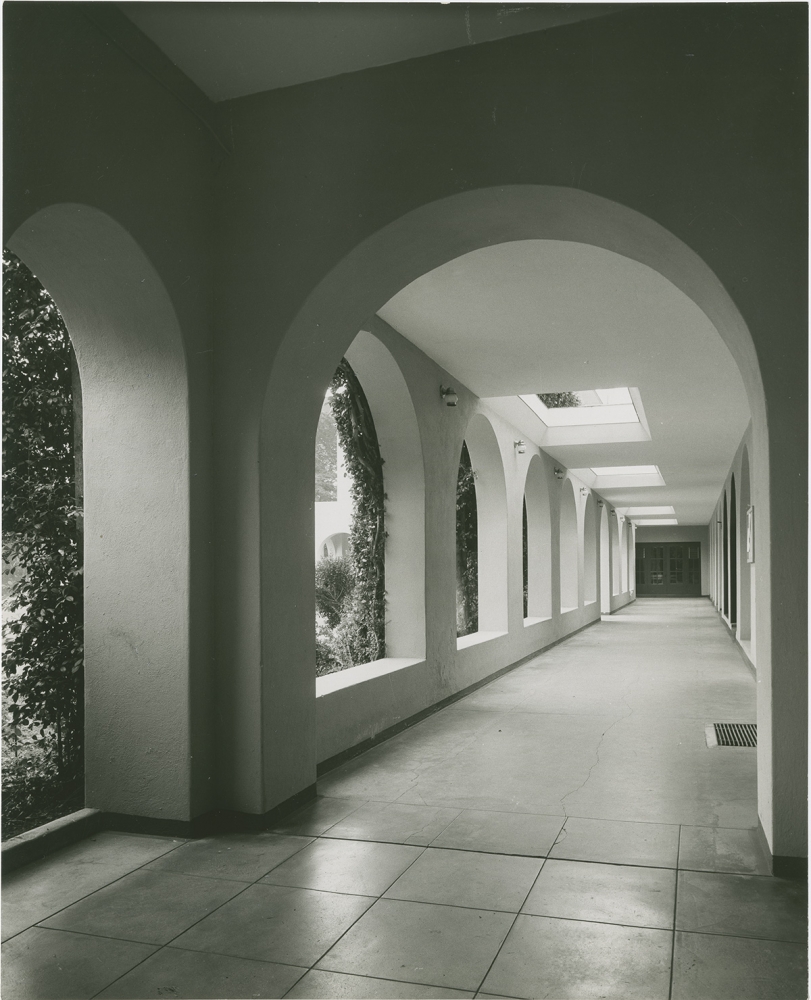
Simplicity and Reform
His masterwork is long gone, but his masterstroke — no less than “a new architecture for the West” — can still be seen across Southern California. And now, an exhibition tracing the influences and impact of the architect Irving J. Gill is on view at UC Santa Barbara.
Providing the first major look at Gill’s work since a 1958 show at the Los Angeles County Museum of Art, UCSB’s Art, Design & Architecture Museum (AD&AM) shines a spotlight on the architect’s remarkable career in “Irving J. Gill: Simplicity and Reform.” Now open, and with a public reception tonight, Friday, Sept. 23, from 5:30-7:30 p.m., the exhibition runs through Dec. 4.
Gill’s groundbreaking architectural vocabulary, which he developed and defined as “the straight line, the cube, the arch and the circle,” was perhaps best reflected in what is considered his crowning achievement: the Walter Dodge House, in West Hollywood. The landmark residence was torn down in 1970, an early victim of urban sprawl.
“The intriguing thing about Gill is that he is a transitional figure who fascinates architects and fans of architectural design,” said Jocelyn Gibbs, curator of AD&AM’s architecture collection, and of the exhibition. “Everyone seems to have their own Gill.”
A model of the Dodge House and several photos of the iconic home are among the wealth of items featured in the historically robust show, which traces the roots of Gill’s architectural language to the social concerns of the Progressive era and the Arts and Crafts movement. It also examines the influence on Gill of Chicago architect Louis Sullivan (1856-1924), in whose office Gill worked from 1891 to 1893.
Sullivan had argued for a “new architecture in America,” Gibbs noted, unaffected by the past and linked to a transcendental view of nature, based on the writings of Ralph Waldo Emerson and Walt Whitman. When Gill left Chicago, and Sullivan, he relocated to Southern California; his version of that “new architecture” took shape beginning around 1903 and fully blossomed by 1907.
By marrying his simple forms to experiments with construction and materials, especially concrete, Gill strived to solve the need for economical, sanitary and fireproof homes for the workingman — and to make beautiful buildings suitable for Southern California. By all accounts, and by the lasting legacy of his approach and style, Gill succeed beyond his aim.
“Many people are drawn to Gill’s modernism,” said Gibbs. “There are lots of different ‘modernisms,’ however. I wanted, in the exhibition, to remind us all of Gill’s context and his teachers, his intentions and his accomplishments. I don’t believe that Gill was a precursor to International Style Modernism. Instead he was a Chicago-trained architect who brought Louis Sullivan’s call for a ‘new American architecture’ to Southern California.”
The Dodge House may be no more, but many Gill-designed villas, city residences and civic structures still remain across the region, particularly in San Diego and Los Angeles. As companion events to its own exhibition, the UCSB museum is collaborating with the Society of Architectural Historians on a daylong tour of three notable Gill homes in L.A. on Sat., Oct. 22.
In addition, on Thurs., Nov. 3, at 5:30 p.m., AD&AM will present USC architecture scholar Kenneth Alan Breisch in the free public lecture “Bertram Goodhue and Irving Gill: The Panama California Exhibition and the Los Angeles Public Library.” Goodhue replaced Gill as chief architect of the Panama California Exhibition in San Diego and, a decade later, took inspiration from his predecessor in his final design for the Los Angeles Public Library.
The AD&AM at UCSB is open Wednesday through Sunday, from noon to 5 p.m. Admission is free. More information about the Gill exhibition and the museum’s other fall events and shows, including “LIFEFORMS: The Makeup Art of Michael Westmore” and “Done. Undone. Redone. The Chair” can be found here.



